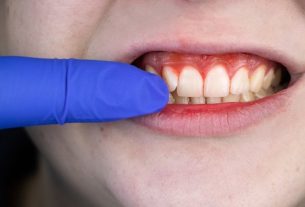Lipedema is a chronic disease that causes the accumulation of fat in the hips, legs and arms. Find out what the symptoms are and how to treat them.
O lipedema is a chronic vascular disease that generates the disproportionate accumulation of fat in the hips, legs and, more rarely, the navel area and arms. Women are most affected by the symptoms, which appear more frequently during periods such as puberty or pregnancy.
A International Classification of Diseases (ICD) recognized lipedema as a disease only in 2022, which has made correct diagnosis difficult over the years. Therefore, confusion with obesity or lymphatic problems, for example, is still common.
As recalled by the Brazilian Society of Angiology and Vascular Surgery (SBACV), the characteristics of lipedema suggest that the origin of the disease is hormonal.
Check out everything about lipedema below, what the symptoms are and how to treat it.
What is lipedema and how is it caused?
Lipedema is a chronic vascular disease that has hormonal origin, with higher incidence in women of reproductive age. Those with the condition have a narrow torso, no signs of overweight or obesity, and an accumulation of fat in the hips, legs and arms.
Some stages of a woman’s life are more prone to the appearance of symptoms of the disease, such as puberty and pregnancy, when there are many hormonal changes.
Lipedema is hereditarywhich is why it is common for women in the same family to develop the disease at some point in their lives.
According to SBACV – São Paulo region, lipedema fat is different from obesity, forming subcutaneous nodules and has an important inflammatory component.
What are the types of lipedema?
There is a classification of five types of lipedema depending on the part of the body affected. Check out:
– Type I
Type I is when the accumulation of fat extends to the hips.
– Type II
Type II goes up to the knees. There is fat on the sides and bottom of the knees.
– Type III
Type III is lipedema that extends from the hips to the ankles, with greater accumulation of fat above the feet.
– Type IV
Type IV affects the arms and is closely linked to types II and III.
– Tipo V
The incidence of swelling only from the knee downwards is type V.
What are the symptoms of lipedema?
O lipedema has symptoms most common the swelling of the affected region, localized pain, tiredness and bruising.
In advanced cases, the The disease can cause difficulty in moving around and even the risk of falls..
It is worth remembering that although members are affected, swelling does not affect feet and hands.
How is the condition diagnosed and treated?
As it is a recently recognized disease, lipedema is often misdiagnosed or delayed. The best doctors to diagnose lipedema are a vascular surgeon and an angiologist..
With the correct diagnosis, It is recommended that lipedema treatment be carried out by a multidisciplinary team. Psychologists, nutritionists, physiotherapists and physical trainers are very important professionals in bringing a better living condition to those who have the disease.
Lipedema is a chronic disease, There is no cure, but there is treatment. Therefore, it is possible to reduce pain and swellingin addition to promoting improved self-esteem in patients.
Doctors recommend low-elastic compression socks, usually flat mesh, to relieve symptoms. However, the clothing should only be used with the recommendation of the professional supervising the treatment.
Monitoring with nutritionists helps maintain an adequate eating routine. A food needs to be abundant in fiber and proteinwhile carbohydrates and dairy products should not be consumed in excess.
A physical activity is also essential for those with lipedema. It is necessary to seek the help of a professional in the field to achieve the treatment objectives and avoid injuries.
Drainage is also part of the routine. Physiotherapists and dermatofunctional aesthetics professionals can carry out individual sessions or define a schedule to drain the affected regions.
read more: Know if it is swelling or fat
What are the differences between lipedema and lymphedema?
It is common for people to confuse the lipedema with lymphedema. Despite the similarity of names, are different conditions.
Lipedema, as discussed previously, is the accumulation of bilateral fat on the hips, legs and, sometimes, the arms.
About that, lymphedema is unilateral swellingusually on one of the legs and feet, caused by the accumulation of liquids.
Sources: SBACV, SBAVCSP, Drauzio Varella website, SP Health Department, Hospital 9 de Julho, Vascular, Eurofarma and Clínica Zignani.




